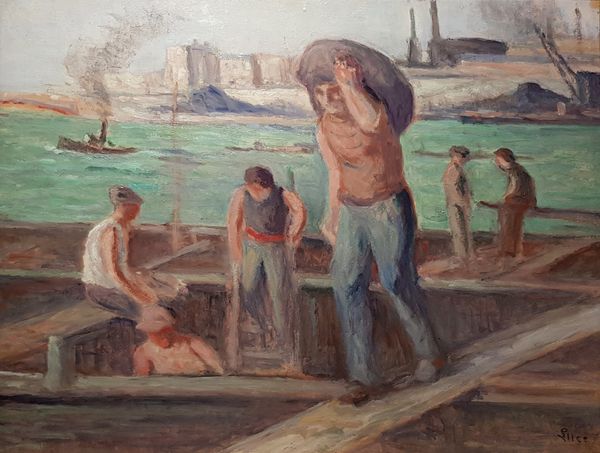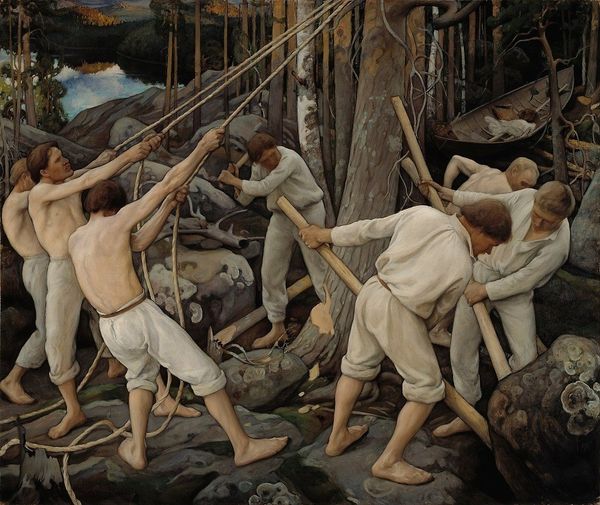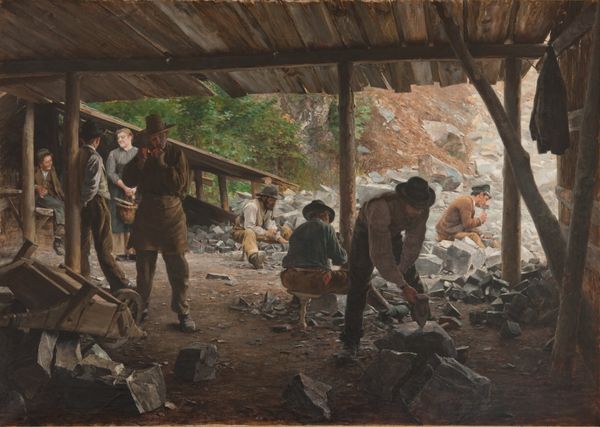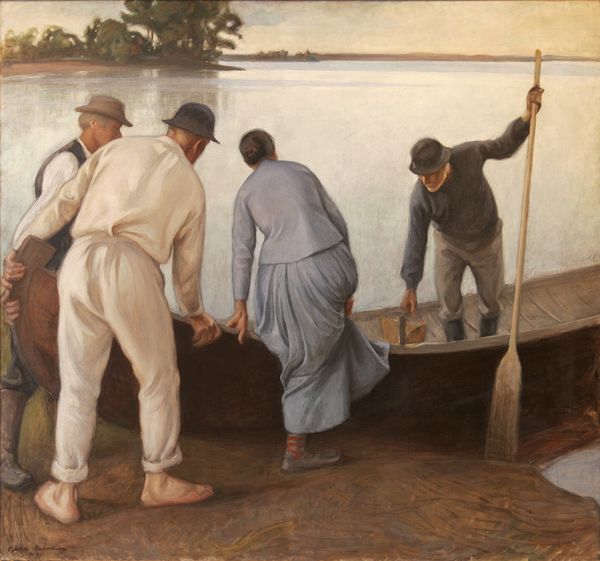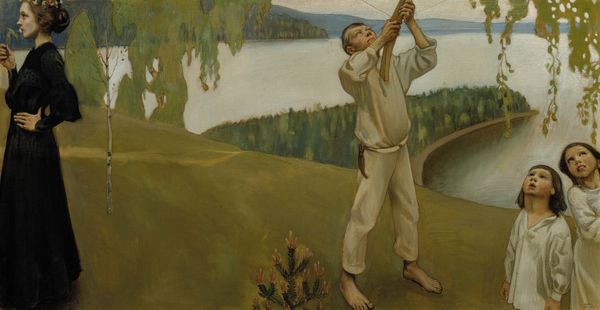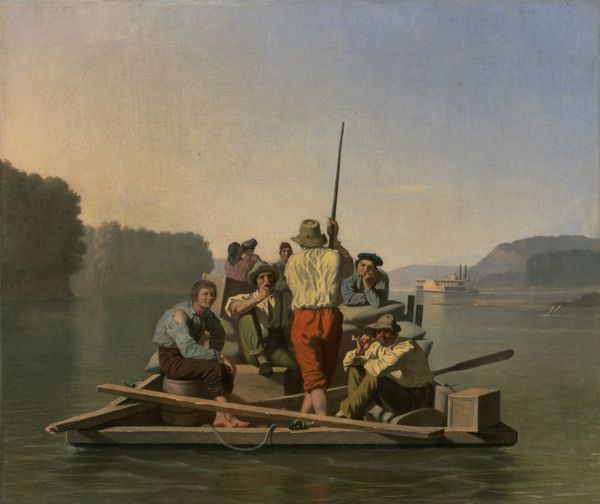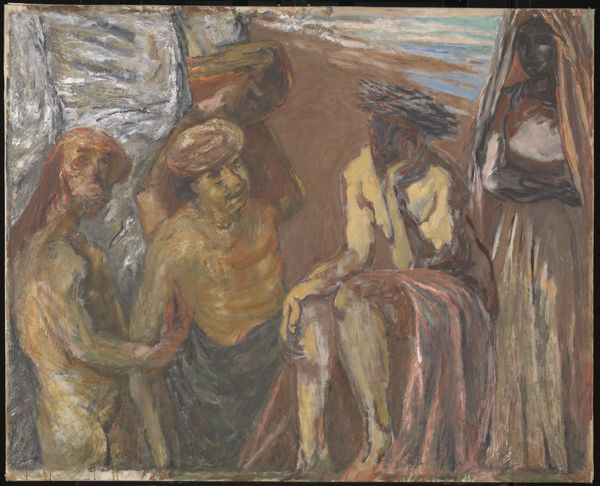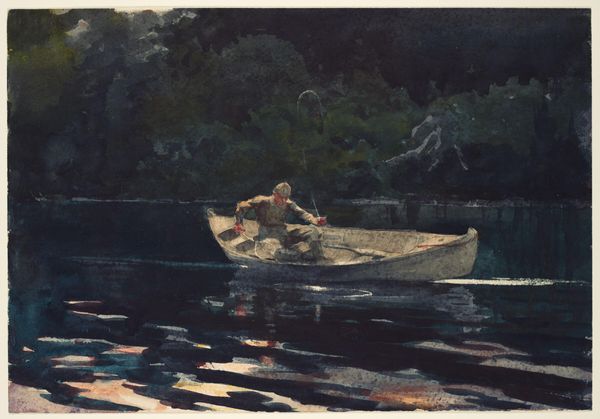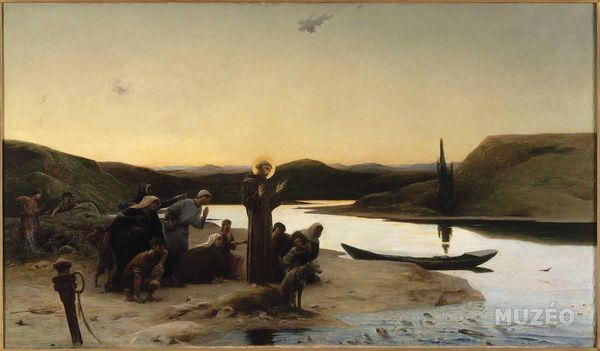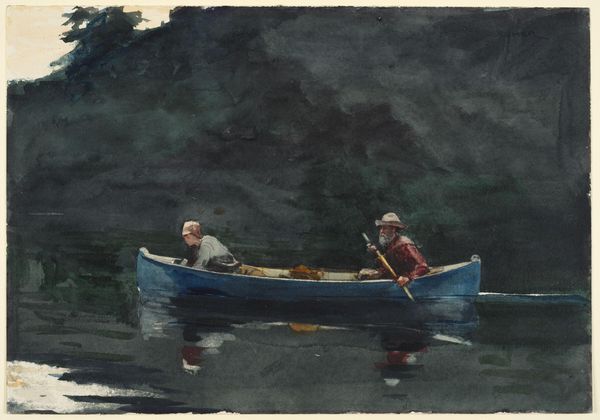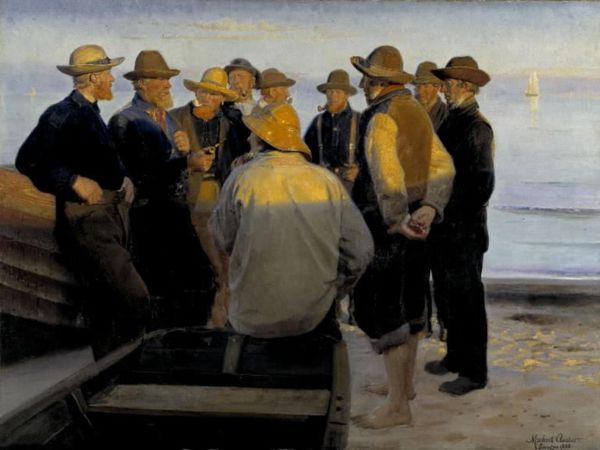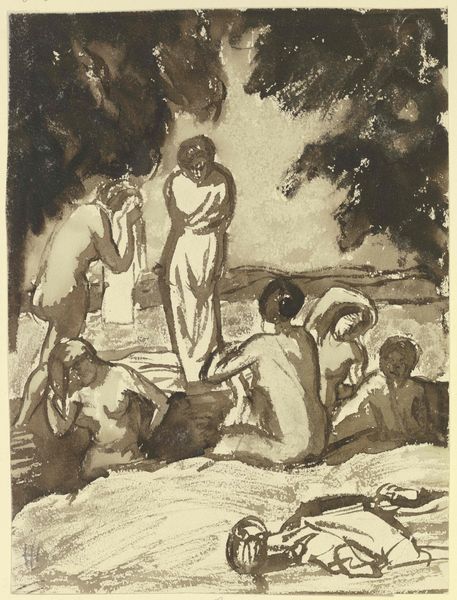
Copyright: Public domain
Curator: Welcome. Before us, we have Pekka Halonen’s "Väinämöisen soitto," painted in 1897. The medium is oil on canvas, and the style lends itself to romanticism, as you can readily notice from its palette and tone. Editor: Immediately, I’m struck by the muted yet captivating colors. There’s a somber beauty in the landscape, juxtaposed against the community seemingly suspended in a timeless moment. The central figure, likely Väinämöinen himself, playing the kantele, becomes a conduit between nature and humanity. It has this uncanny and very solemn atmosphere. Curator: Precisely. Halonen, as a Finnish artist at the turn of the century, actively engaged with the themes from the Kalevala, the Finnish national epic, which was experiencing a revival and which inspired this painting. This was crucial for the rise of Finnish nationalism and identity formation, separating it from under Russian authority and its symbolic language. Editor: Yes, seeing these cultural roots visualized here speaks volumes. Väinämöinen, is seen surrounded by his community at a waterbank. What does his music provide to the group and us? He provides this moment where Finnish heritage comes to life, particularly in this crucial era in political history. But I also sense a deeper layer regarding the portrayal of labor and its cultural status? They all look like workers, as if ready for some manual labor task, after a well-deserved break. Curator: Indeed, that’s a thoughtful observation. Halonen painted the Finnish peasantry a lot, although here they have an almost mythic appearance due to the references to Finnish folk tales and history. Yet there are some traces of reality. Also, it's critical to consider Halonen's broader artistic and political engagement. Halonen's art played an integral role in defining a cohesive and homogenous visual narrative. Editor: Yes, it's a complicated cultural contribution. But beyond this, the image strikes me now that there's little class definition, so in that regard it fulfills some level of unity across genders, as a truly shared and democratic imagery! How far-reaching, but ultimately this kind of depiction could prove exclusionary or even be later employed by conservative nationalist imagery in times of conflict and war? Curator: Yes, that tension is exactly what defines cultural production of that era in Europe as many cultures began forging or re-forging national identities! Understanding its complexities invites critical thinking about the legacy and ongoing influence that Finnish culture and imagery hold today, within shifting social-political landscapes. Editor: So let's contemplate: Does this image reinforce or redefine traditional notions of community? I appreciate how it makes us confront the nuances inherent to heritage and national imagination. Curator: An evocative question to ponder, especially as we move ahead into today’s discussions around representation, identity and art in the age of anxiety and alienation!
Comments
No comments
Be the first to comment and join the conversation on the ultimate creative platform.
